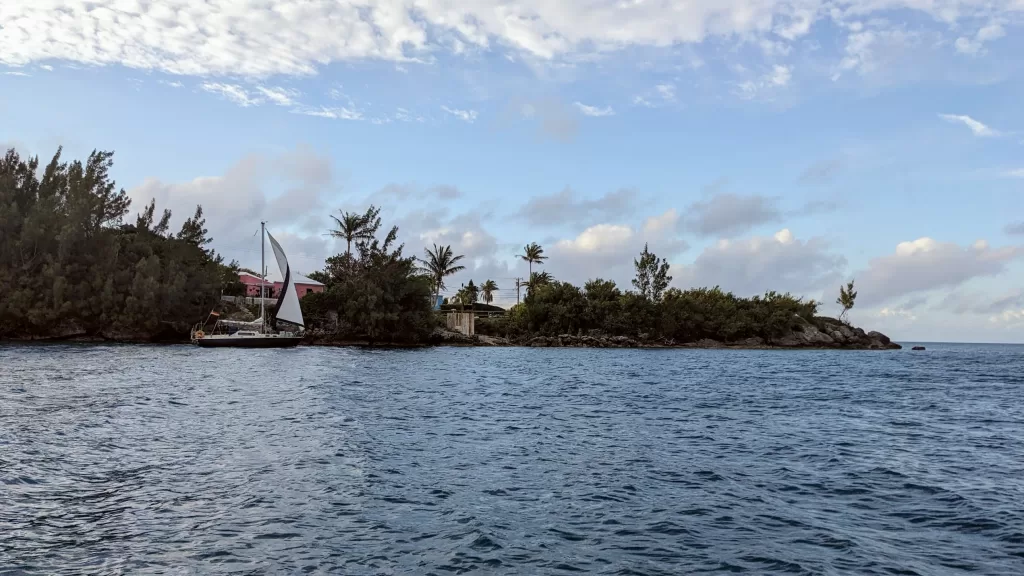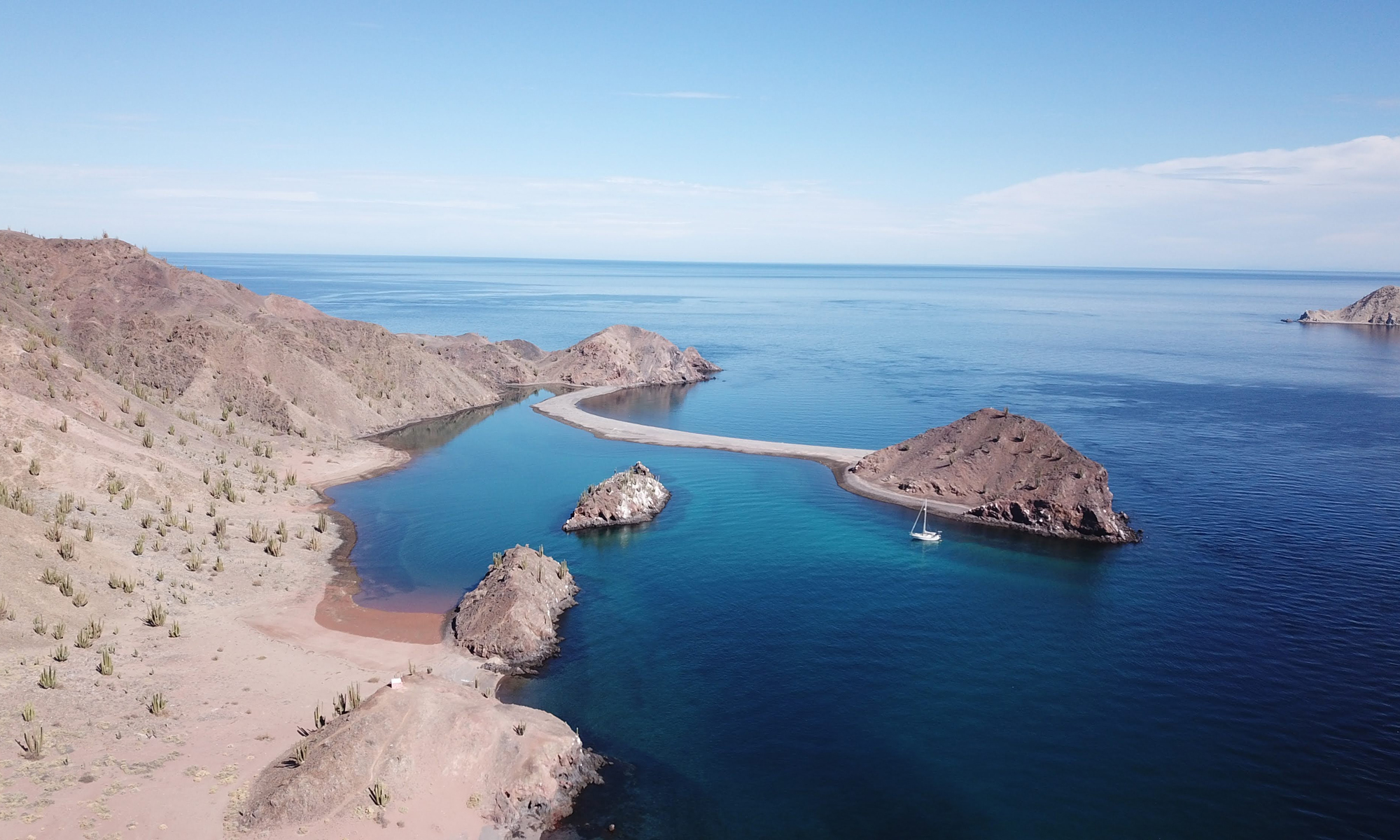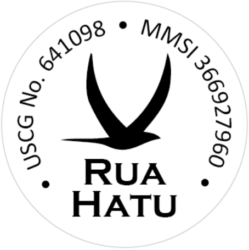After over 3 years in the tropics, we finally headed north in search of cooler temperatures. We left St. Thomas in the US Virgin Islands and aimed for the tiny archipelago of Bermuda situated in the middle of the Atlantic Ocean. Our short stay on the island was filled with unique flora, fauna, foods and fun and offered us a chance to relax between two long passages en route to the US East coast.
900 Nautical Miles North
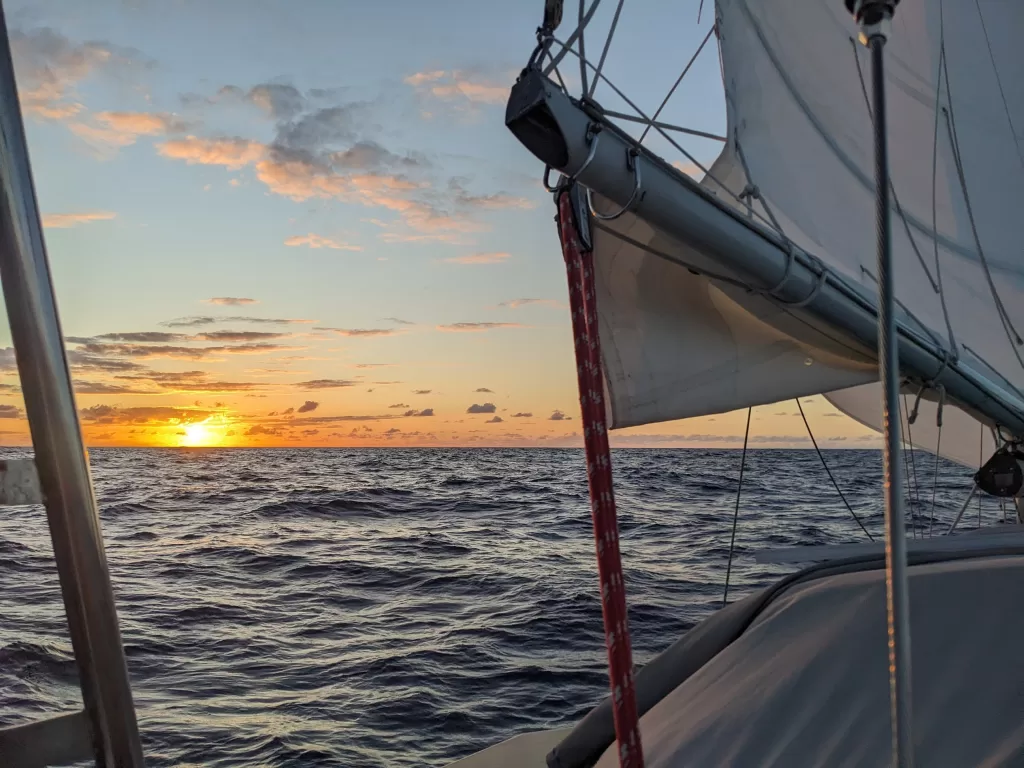
Our last long passage from Panama to the Dominican Republic seemed ages ago as we set out for our even longer trip into the North Atlantic. Back then, we only strayed from the coastline briefly during the crossing between Columbia and Hispanola; a mere 400 nautical mile offshore stretch. This time we lost sight of St. Thomas within hours of departure and didn’t see any land again for 8 days, traveling over 900 nautical miles.
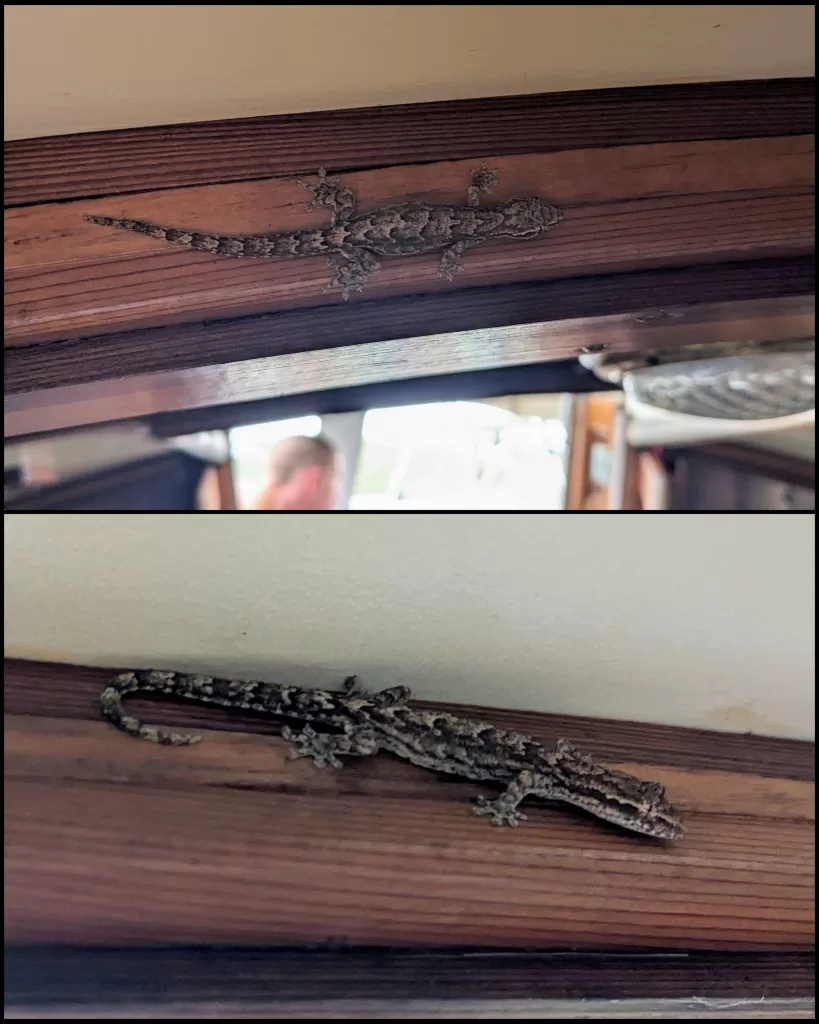
Fortunately our preparations and careful planning paid off, as we had a reasonably comfortable passage. Winds were consistent for much of the trip, never stronger than 25 knots, and we only motored for roughly 16 hours to keep pace with favorable arrival conditions. The deep blue water of the Atlantic was surprisingly void of life. We rarely saw even the smallest of fish jumping near the boat, and never encountered any dolphins, whales, turtles or birds. The only thing to see this time was endless, deep blue water, an occasional tanker or cargo ship and tons of sargassum, the later of which made trolling fishing lures essentially worthless.
Arrival in St. George Harbor
Shortly after sunset on our 8th night, we spotted a faint glow in the distance. Within hours, the tiny island emerged from beneath the horizon, and the depth beneath us decreased dramatically from over 4000 meters to just 10 outside the entrance to St. George harbor.
Bermuda is but a speck in the middle of a giant ocean, and it felt as if we just happened to stumble upon it in the dark. Bermuda Radio, the 24/7 service that monitors approaching vessels, guided us into the harbor and directed us to anchor and await our turn at the Customs dock the next morning. Tired, but satisfied we set the hook in the deep water of the harbor surrounded by many other visiting sailboats.
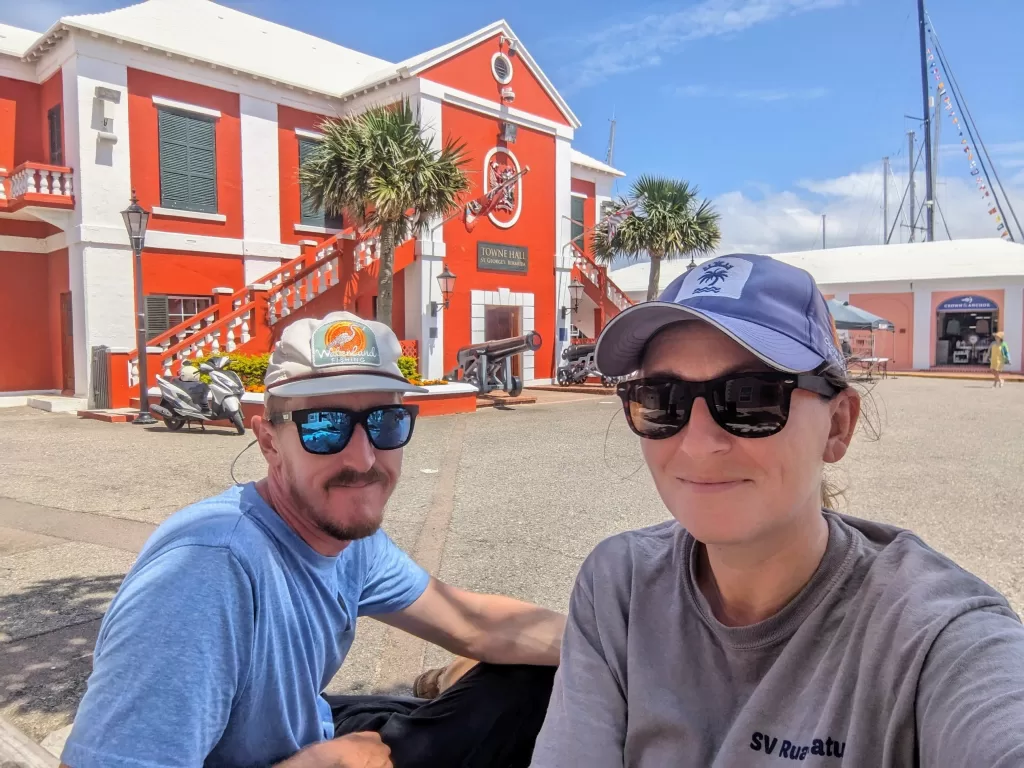
With so many boats passing through Bermuda, particularly this time of year, it was a bit of a mess getting into the tiny Customs dock on Ordinance Island the next morning. One over-zealous seaman even tried to cut the line as we wrangled Rua Hatu to the gusty quay, but we wedged ourselves in. Thankfully the check-in process was a breeze, as we had already submitted all of our details electronically before we departed. We were surprised how few other boats took advantage of the (mostly) online pre-arrival processes Bermuda has in place to expedite clearance, so here’s a quick breakdown of what we did to satisfy each of the government agencies’ requirements:
- The Department of Marine and Port Service’s requires each vessel to fill out their Yacht Pre-Arrival Online Form – this will save you from reciting all the gory details of your boat to Bermuda Radio over VHF (including MMSI and EPIRB ID numbers).
- For Customs, register/login to Sailclear, fill in the details of your vessel and all passangers/crew onboard, then submit a “Pleasure Craft Arrival Notification” before you depart for Bermuda. This will dramatically reduce the time you spend in the Customs office at Ordinance Island, and will certainly delight the hard working customs officers who have to process your clearance. When you leave Bermuda, you can use the same account to submit your departure notification as well, further expediting the process
- Additionally for Customs, you may want to fill out and print the last page (page 22) of the Ministry of Transport’s Guidance Document as you will need this for obtaining a cruising permit.
- The Health Department requires all vessels to fill out their Maritime Declaration of Health form and email a copy to both [email protected] and [email protected] and submit the hard-copy to a Customs Officer during clearance. We emailed ours and received an automated reply, but were never questioned further upon arrival.
- Lastly, Immigration requires each person onboard to fill out and submit their online Arrival Card and print or download a copy to present to Customs on arrival (you will receive an emailed PDF copy once submitted, the Customs officer just need to scan the bar-code)
- For those with pets onboard, the processes is a bit more complicated as you must obtain an import permit for each animal 10 days prior to arrival. The full details of this process can be found on the Department of Environmental and Natural Resources website and will require getting a health certificate from a qualified veterinarian in the country you arrive from
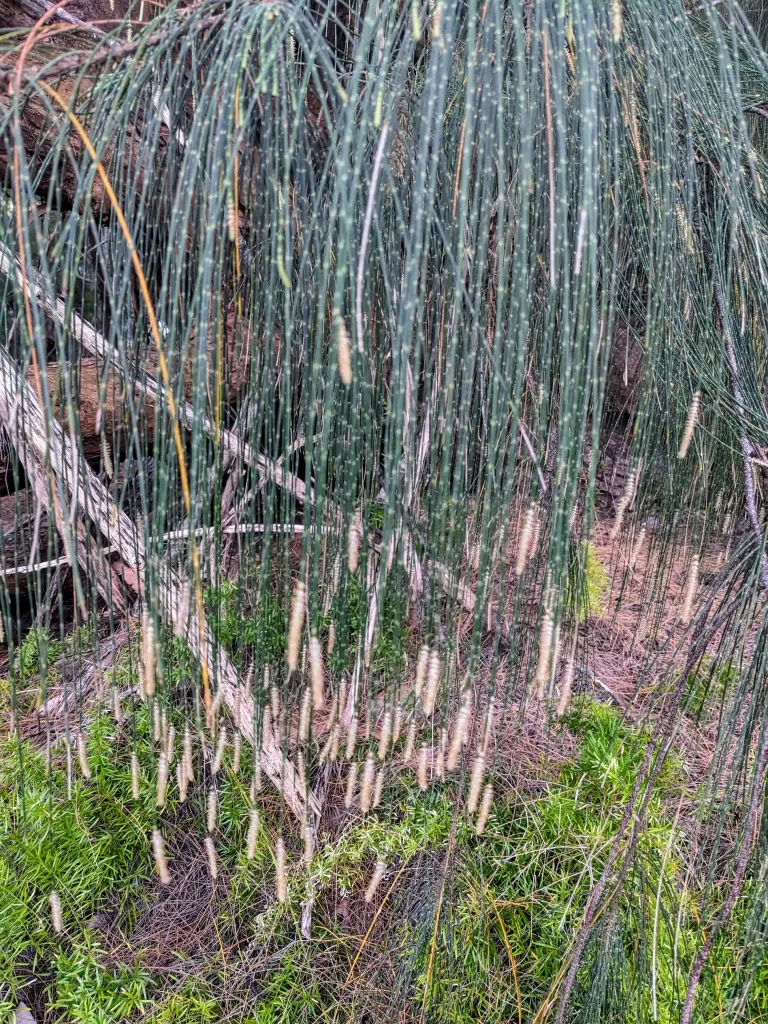
Once our passports were stamped, we began settling in to the new climate. Our first few days in St. George were quite unusual to say the least. Instead of sweating in the tropical heat of the Caribbean, we found ourselves tucked under blankets at night. Daytime temperatures were mild, but the strong breeze that picked up after our arrival called for long-sleeves when out and about. The vegetation was clearly a combination of tropical and temperate species. A healthy mix of both deciduous and coniferous trees studded the rocky shores, mixed with cactus, palms and a plethora of different colored hibiscus.
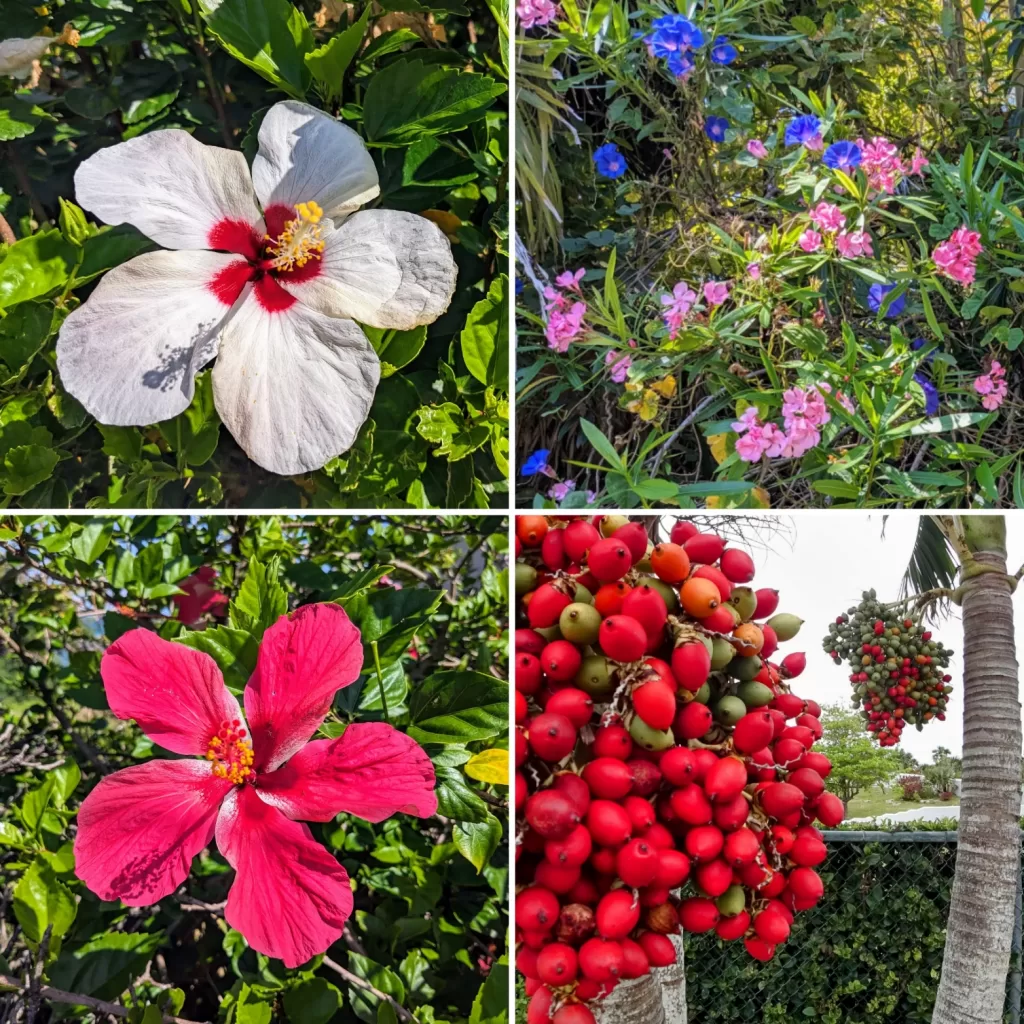
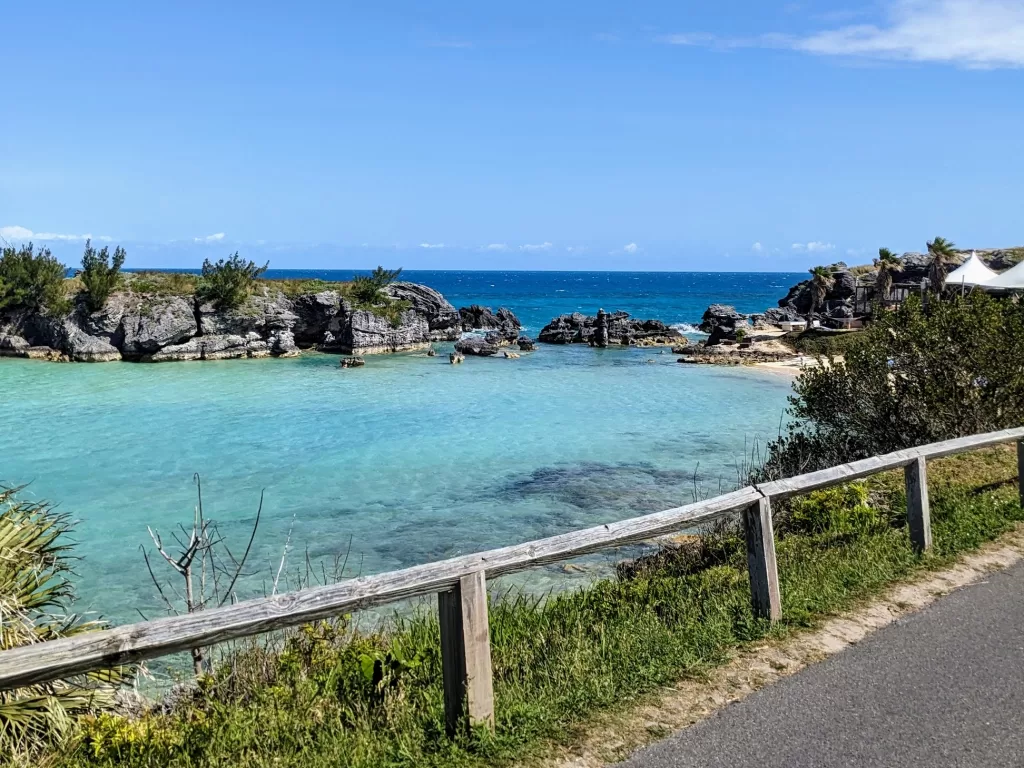
The narrow, winding streets of the town twisted through colorful stucco buildings to beautiful ocean views. We found several small uninhabited islands in the harbor with extensive trails to walk Kiwi around. One such island had an old Cub Scout clubhouse and was maintained for camp outs, though we never saw anyone else visit.
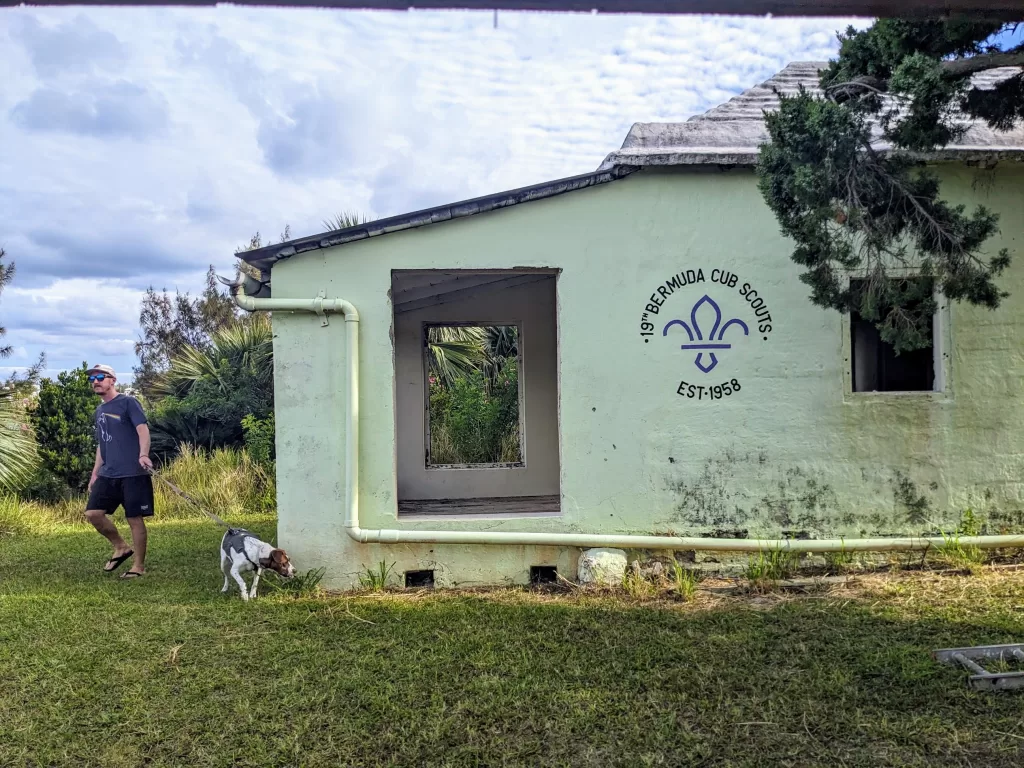
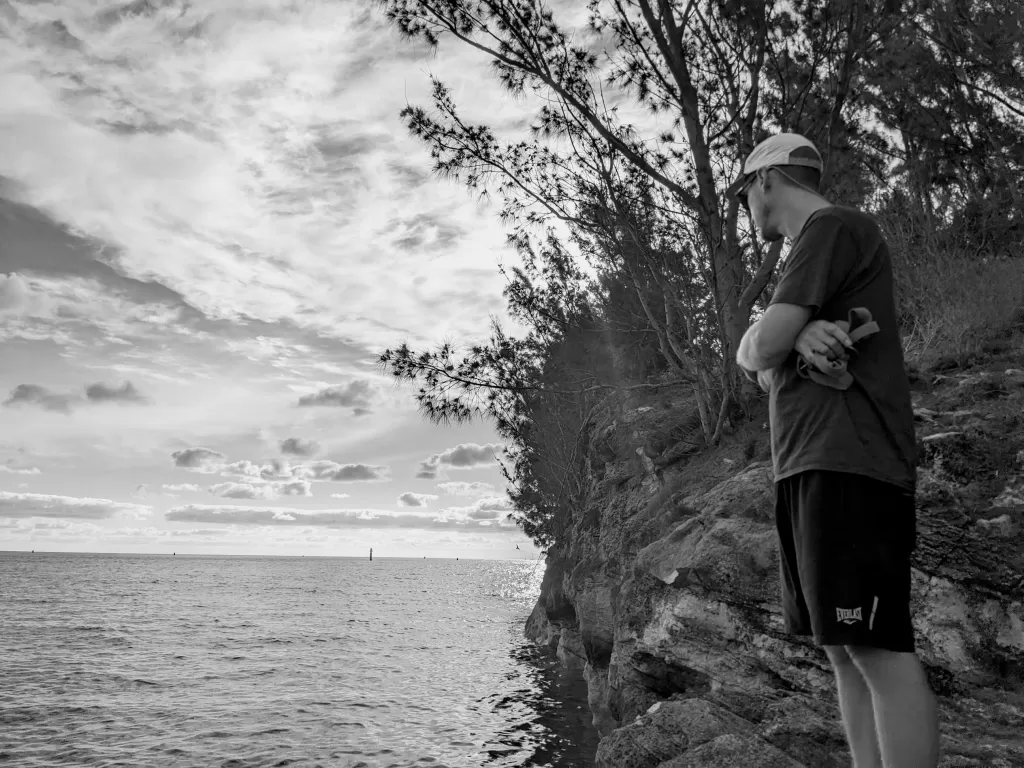
St. David’s Island and Beyond
Though all a part of the same Bermuda archipelago, each of the island’s that makeup the cluster have subtle differences. While St. George’s island felt very rustic and a bit touristy, St. David’s island felt like a sleepy village despite being home to the large international airport that connects Bermuda to the rest of the world. We found a public pier between the small waterfront homes to tie up our dinghy, and hauled our laundry up to the local laundromat. There we watched a steady stream of private jets come and go just beyond the fence-line as we fed coins into the ancient washing machines.
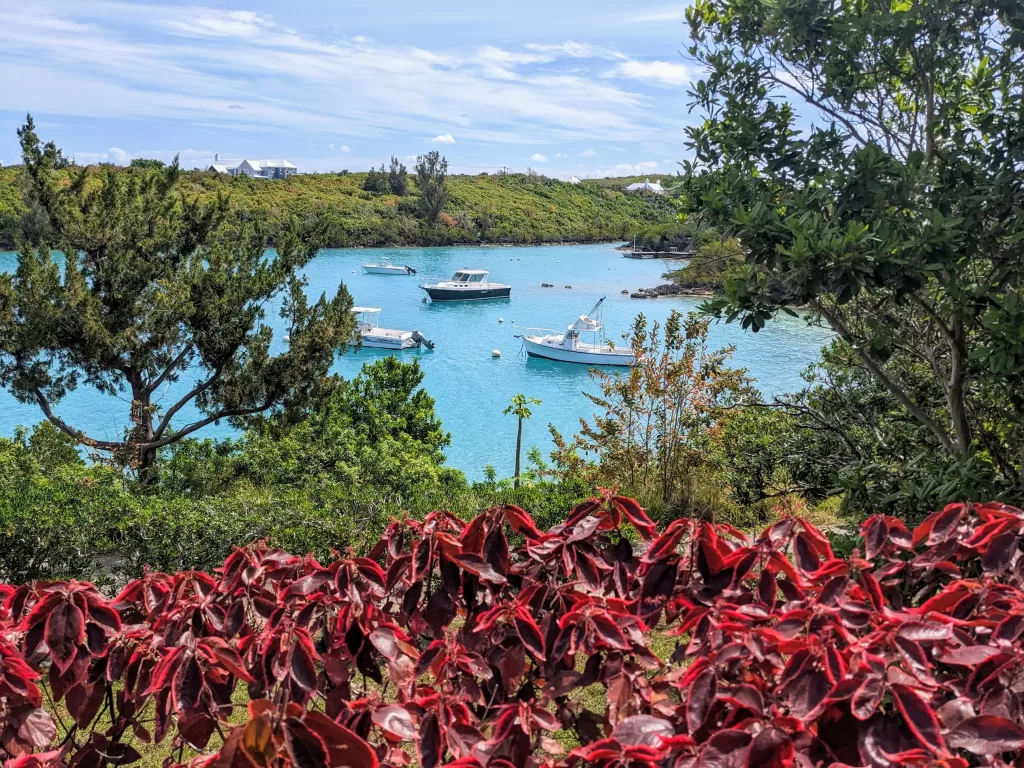
Nearby, we hiked through the ruins of old US Air Force installations, and past the NASA tracking radar, used since the 60’s to monitor various rockets launched from Cape Canaveral. All of this was housed within the Cooper Island Nature Reserve, a stark contrast between technology and the environment, but with a beautiful view of the coastline. We felt alone for much of the walk, and enjoyed the solitude despite the air-traffic overhead.
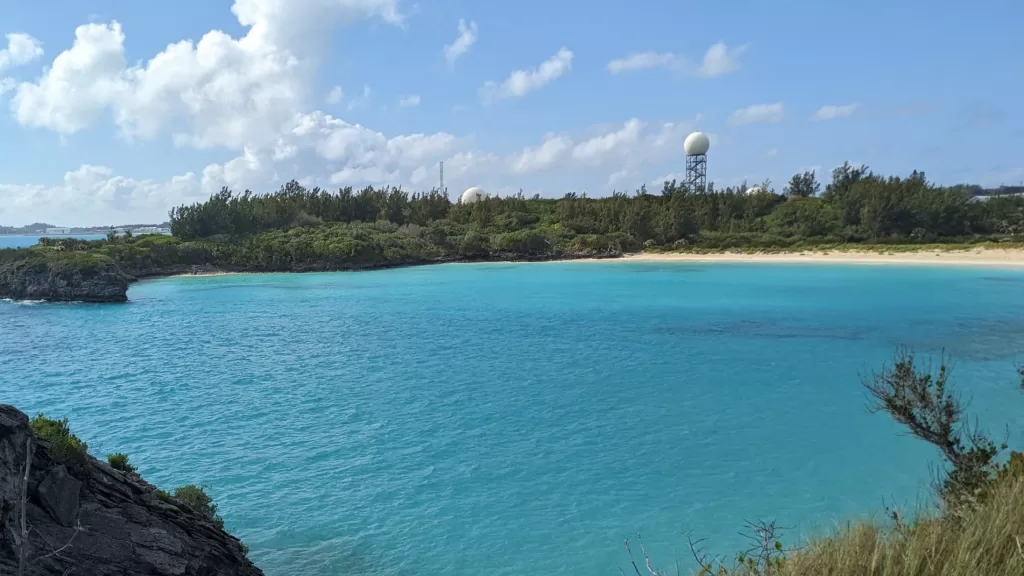
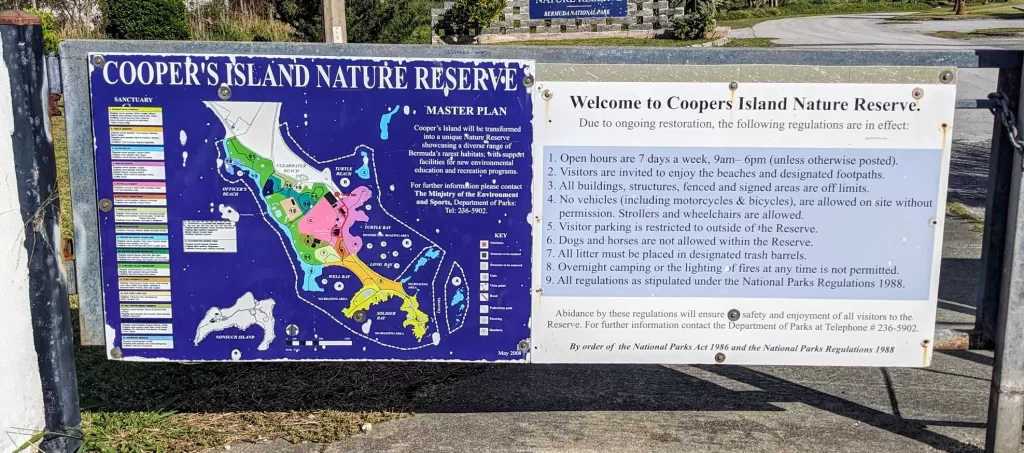
As with any new place we visit, we were particularly interested in tasting the unique local flavors. Sure the fish sandwiches and the Rum Swizzles that Bermuda is known for were tasty, but even better were the various unique fruits that grow on the island. We had ample opportunities to fill bags with ripe Suriname Cherries along the roadsides of St. David’s. On their own, they have a sweet, almost tomato like flavor, but cooked into a jam, they become uniquely floral. There were also many prickly pear cactus with purple fruits growing in the cracks of the rockier islands; though only a handful were ripe enough to eat during our stay.
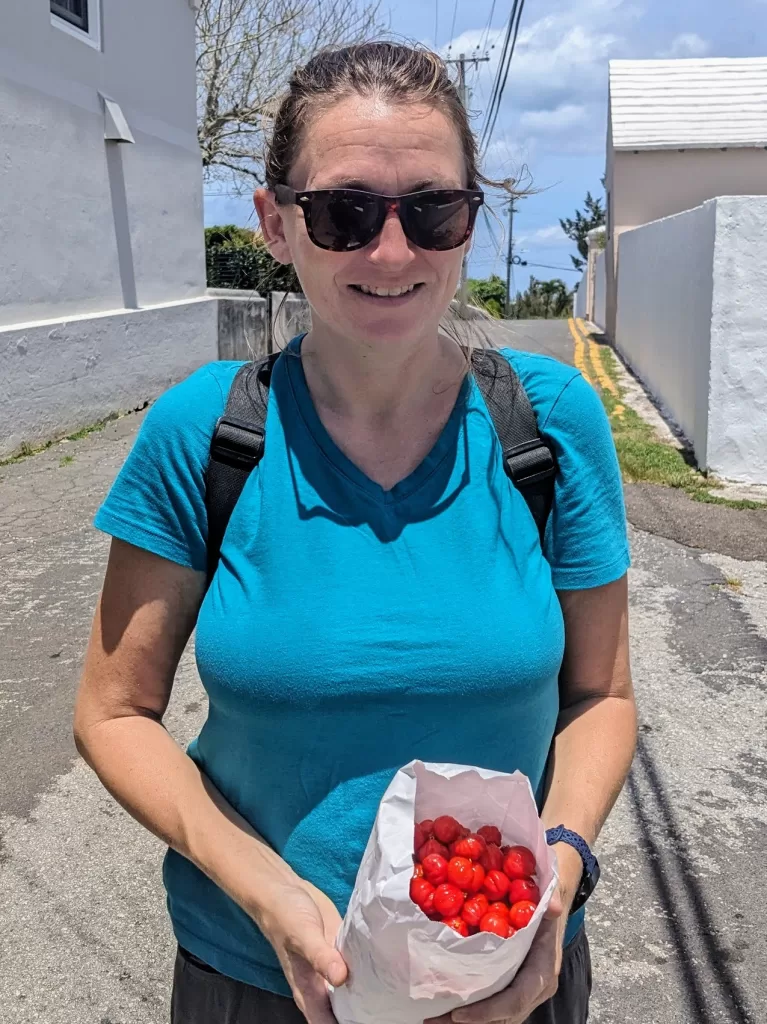
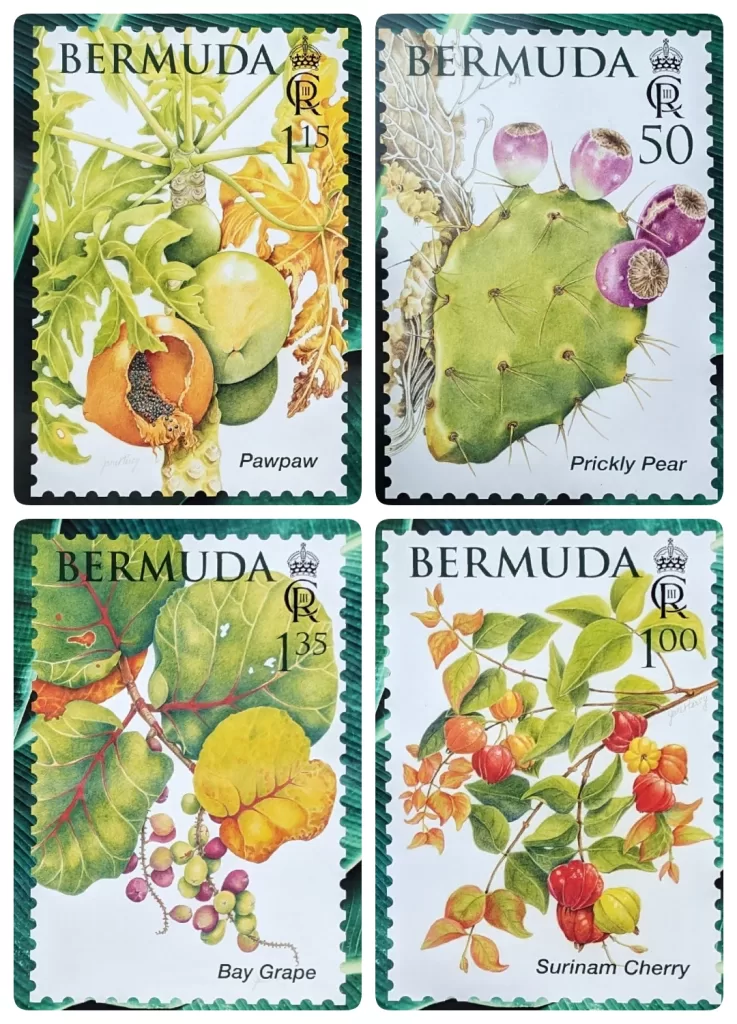
Hamilton by (Someone Else’s) Boat
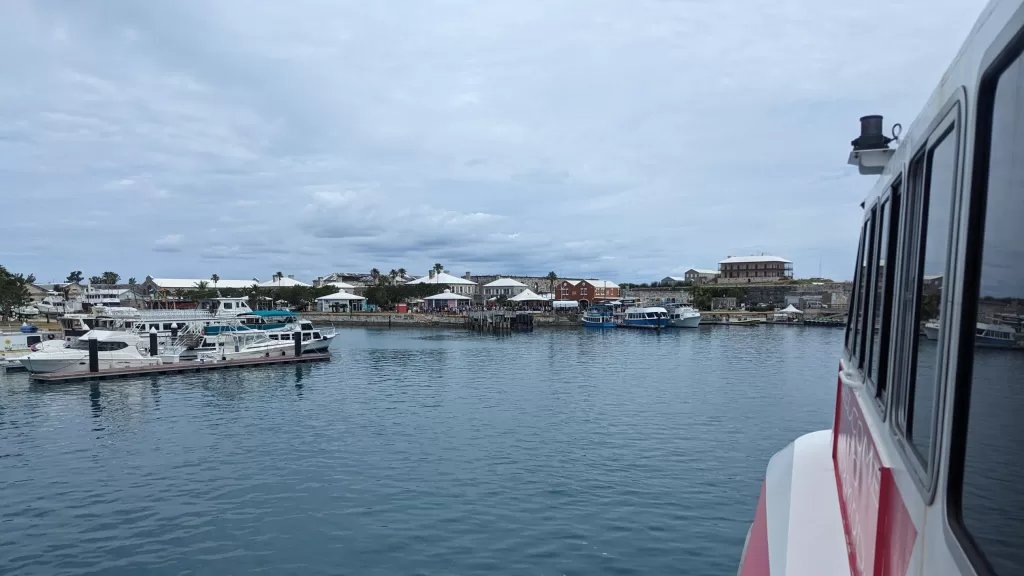
Once the winds settled, we ventured far enough afield to visit the main “city” of Hamilton, a tiny but dense mix of modern and old-world buildings on the southern most island. We hopped on the ferry from St. George’s which swiftly motored around the North side of the islands, passing through the large reef protected basin than encircles the land. The ferry stopped at the Dockyard, a cruise ship terminal on the northwestern most peninsula of the island. From there, we took a bus around the peninsula and into Hamilton. Public transit was excellent throughout Bermuda, though as with everything else, it was expensive at $5.00 per ride.
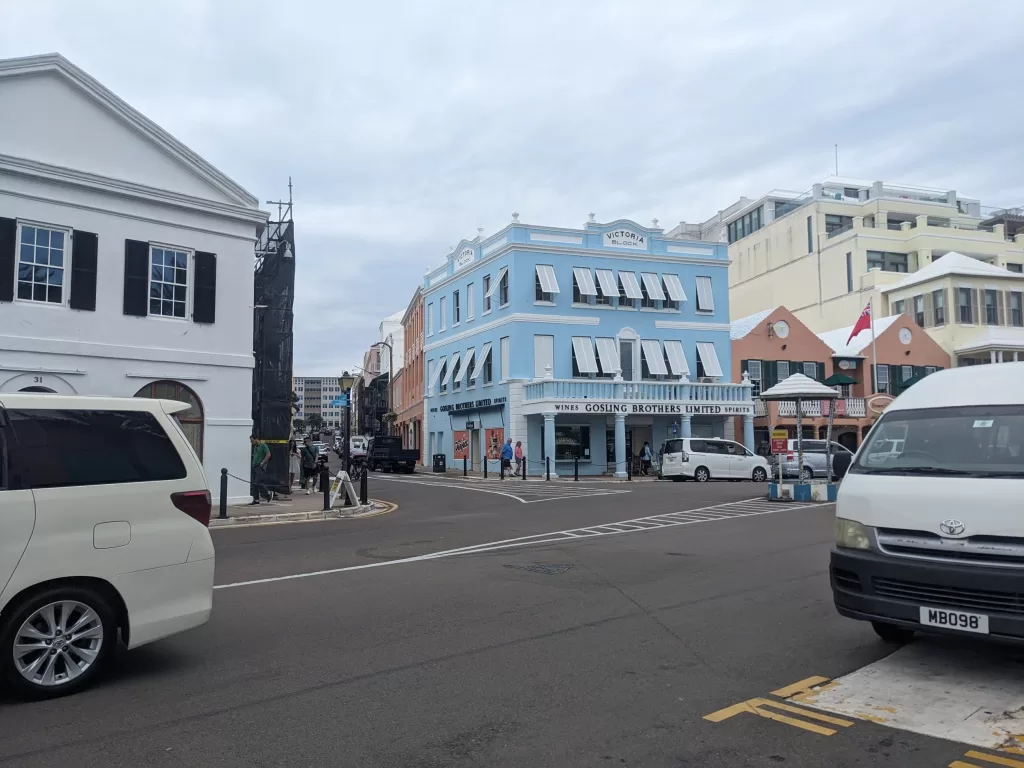
Downtown Hamilton was fairly crowded with cruise ship tourists and business folks primarily concentrated around the fancy (read expensive) restaurants that line the waterfront. But as with any large city, our first stop was the grocery store, where we loaded our bags with all of the fruits, vegetable, bread and pastries we could carry. Much like the USVIs, all goods must be shipped in to Bermuda and thus everything costed quite a lot. However the variety and quality was great and we really enjoyed the huge variety of deli foods available fresh in the grocery store. Everything from roast ham, to jerk chicken, to duck and seafood was available, and flat-rate priced by weight. Many of the flavors were reminiscent of the Caribbean.
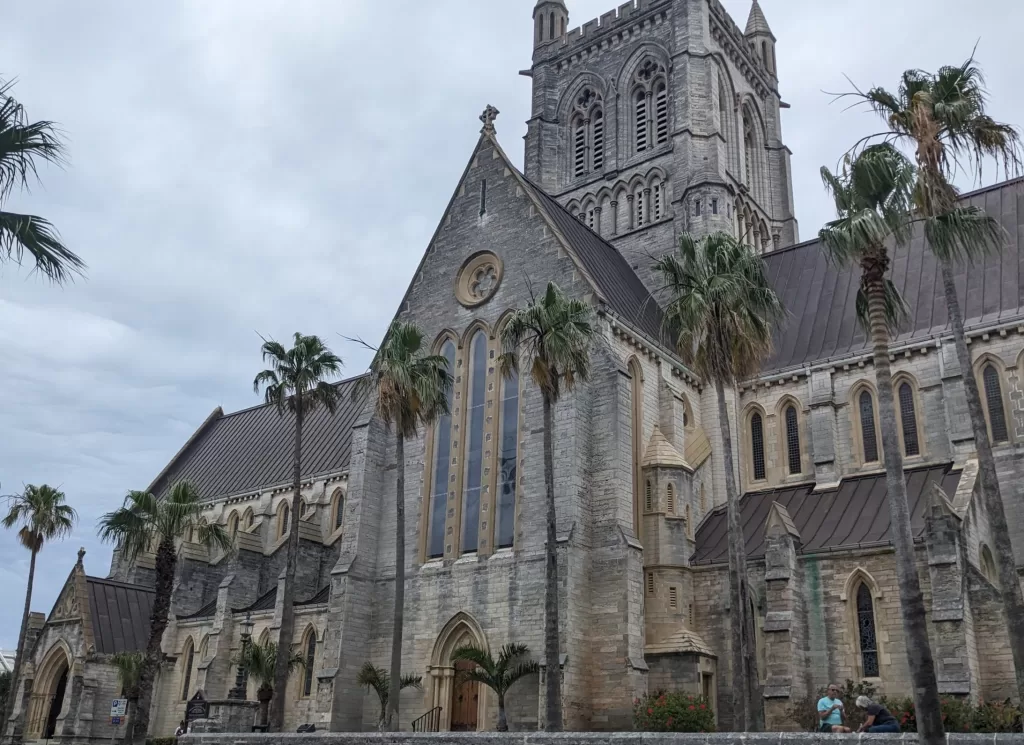
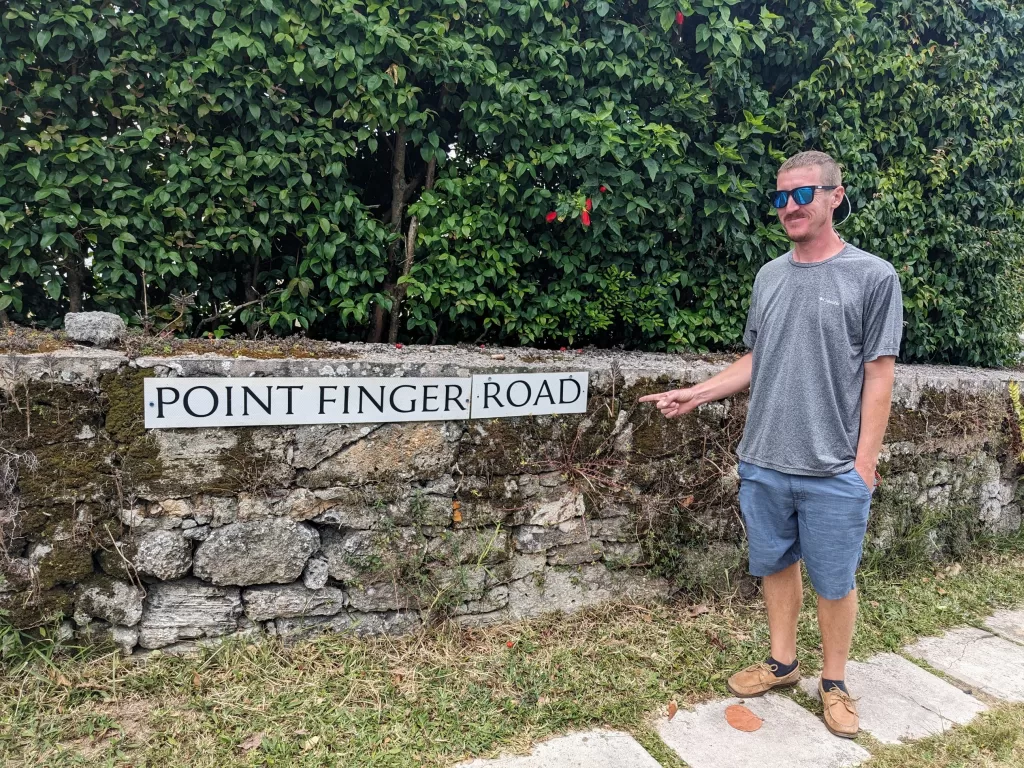
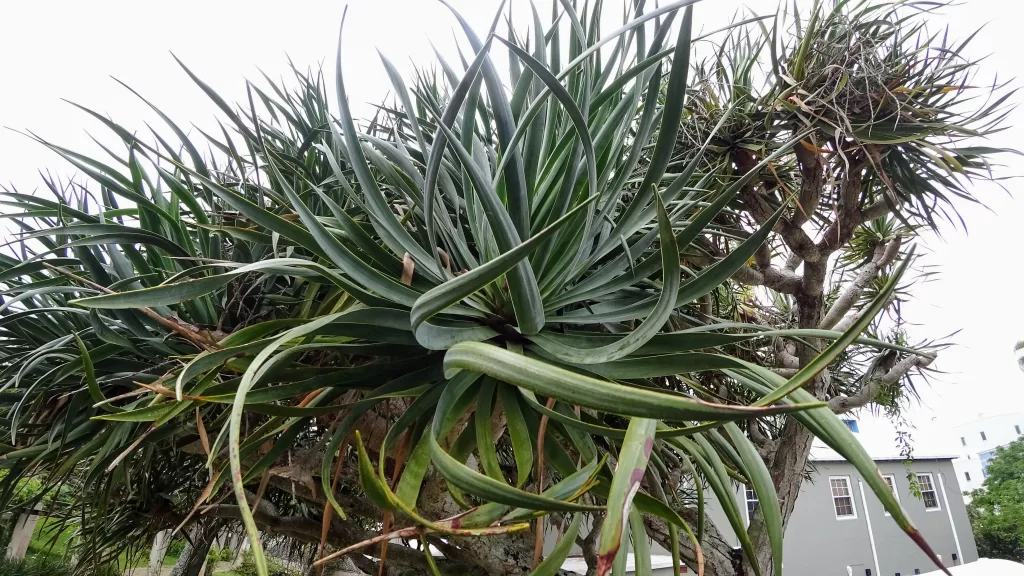
Back at anchor, we set about preparing for the next leg of our journey after our short stay in Bermuda. The popular 3 month window between May and July for transiting to either the US East Coast or across the Atlantic to the Azores was certainly in full swing, and we watched dozens of boats come and go daily during our stay. Soon we too would depart the tiny spec in the middle of the Atlantic ocean, bound for our next adventure back in the USA.
